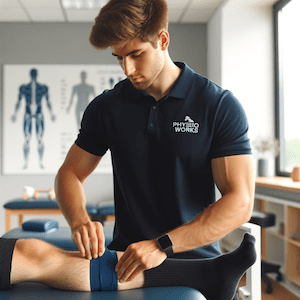Acute Injury Treatment
Article by John Miller
Acute Injury Treatment: Effective Recovery Tips
Acute injuries can happen in an instant, often when we least expect them. These injuries require immediate and appropriate treatment to ensure a swift and effective recovery. Without the right interventions in those critical first few days, the healing process can slow down, and complications might arise.
Why Immediate Action is Crucial
When an acute injury occurs, the body begins its natural healing process. However, without timely and correct treatment, this process might not proceed as effectively as it should. Immediate treatment can alleviate pain, minimise the risk of further damage, and set the stage for a faster recovery. The quicker you act, the better your chances of a full recovery without lingering issues.
How Physiotherapy Enhances Recovery
Physiotherapy plays a pivotal role in managing acute injuries. Physiotherapists use various techniques to reduce pain, enhance scar tissue formation, and speed up the return to normal activities. They tailor exercises to the specific needs of your injury, helping to strengthen or loosen the affected area, which can prevent future injuries.

New Research
Recent studies published discuss when to use PEACE (Protection, Elevation, Avoid Anti-inflammatories, Compression and Education), Dubois and Esculier (2020), and when to use CARE (Cryotherapy, Avoid, Rehabilitate and Elevate. Fousekis K and Tsepis E (2021)
What to Do for Acute Injury Recovery
- Rest with Caution: Rest is the first step but doesn’t mean complete inactivity. Avoid painful movements for the first 2-3 days, but gradually reintroduce gentle movement as advised by your physiotherapist.
- Ice or Heat? Ice is essential in the first 48-72 hours to reduce pain and swelling. Heat should be avoided during this period but can be beneficial later to relax muscles and improve blood flow.Read more: Ice vs. Heat for Injury Recovery
- Compression and Support: Using compressive bandages or supports can control swelling and support new scar tissue formation. Consult your physiotherapist to determine if additional supports like braces or tape are necessary.
- Elevation: Elevating the injured area above heart level can reduce swelling. However, this is not always practical or necessary for all injuries. Pay attention to your body’s signals.
Why Physiotherapy Should Be Your Next Step
Neglecting or delaying physiotherapy can lead to slower healing, abnormal scar tissue formation, and even chronic pain. Early physiotherapy intervention is essential to ensure optimal recovery and to prevent long-term complications. Physiotherapists assess the biomechanics of your body, correct any faults that might have caused or could lead to future injuries, and provide advanced healing techniques like ultrasound and electrical stimulation.
Read more: Why Physiotherapy is Essential for Injury Recovery
Conclusion
Early intervention and physiotherapy are key to recovering quickly and effectively from acute injuries. Don’t wait—seek professional advice promptly to ensure the best possible outcome.
What to Do Next
If you’ve suffered an acute injury, consult a physiotherapist or doctor immediately. Personalised care will help you recover more quickly and effectively.
Rochedale - Call 38410277
Book Online: RochedaleSalisbury - Call 32751044
Book Online: SalisburySandgate - Call 32691122
Book Online: Sandgate
Acute Injury Treatment FAQs
Why is Immediate Treatment Important for Acute Injuries?
- Immediate treatment helps control swelling, manage pain, and kickstart the healing process, reducing the risk of further damage.
How Does Physiotherapy Help with Acute Injury Recovery?
- Physiotherapy reduces pain, strengthens the injured area, and prevents future injuries through personalised exercises and advanced techniques.
What Should You Do First After an Acute Injury?
- Rest the affected area, apply ice, and consult a physiotherapist to create a tailored recovery plan.
When Should You Apply Ice or Heat to an Injury?
- Apply ice during the first 48-72 hours; switch to heat only after swelling has reduced.
Why Is Elevation Important for Injury Recovery?
- Elevation helps reduce swelling by promoting fluid drainage away from the injured area.
Where Can You Seek Physiotherapy for Injury Recovery?
- Visit a trusted physiotherapist for a personalised recovery plan tailored to your specific injury.
Related Articles
- Sports Injuries – Discover effective treatments for common sports injuries.
- Soft Tissue Injury – Learn how to manage and recover from soft tissue injuries.
- Physiotherapy for Athletes – How physiotherapy supports athletes in injury recovery.
- Biomechanical Analysis – Discover the importance of biomechanics in injury prevention.
- Physiotherapy Techniques – Learn about advanced physiotherapy techniques used in recovery.
- Acute Injury Overview – Explore common types of acute injuries and their treatments.
- Injury Treatment Options – Learn about various treatment options for acute injuries.
- How to Treat Acute Injuries – Get detailed advice on treating acute injuries at home and when to seek medical help.
















































































